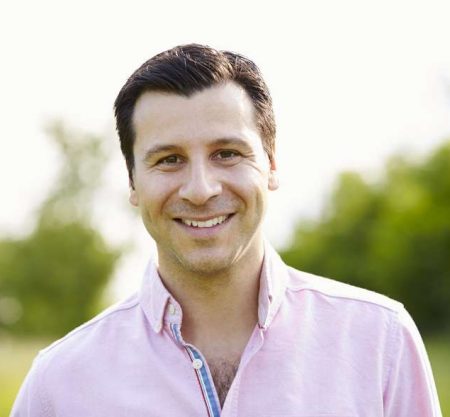
Break Free: Psychedelic Addiction Treatment
Table of Contents
What are Synthetic Hallucinogens?
Synthetic Hallucinogens are man-made substances that mimic the effects of classic hallucinogenic drugs like LSD. These substances are frequently used as additives in designer drugs such as Ecstasy. PMA and PPMA are molecularly similar to Ecstasy or methamphetamine, as are Mephedrone and MDPV, and Methylone is frequently used in Bath Salts or labelled as Ecstasy. Other street names include Smiles, 25B, 25C, 25I, 2c-E, Europa, NBOMe, and N-Bomb, which is more potent and more toxic than LSD, and cheaper.
I am looking for help and advice for Alcohol | Drugs | Gambling
What Are Synthetic Psychedelics Used For?
People use Synthetic Hallucinogens with the intent of experiencing an energized “high” similar to other stimulants and designer drugs. Synthetic Hallucinogens are less expensive and more readily available than other illegal stimulants, mainly because they are made with any one of a number of highly inexpensive and frequently toxic additives.
Individuals using these substances are seeking a feeling of euphoria, dissociation, floating, extreme relaxation, and empathy, although they may also be seeking traditional stimulant effects such as decreased inhibitions, increased sociability, alertness, confidence, amnesia, and general disorientation. The range of additives and unknown chemical components in synthetic hallucinogens makes their effects highly unpredictable with each use.
What Are the Side Effects of Using Synthetic Psychedelics?
Since Synthetic Hallucinogens are created in illegal labs, their ingredients and potency vary a lot, making it nearly impossible to know what is actually in them or what they can do to you. There is a wide range of side effects that can occur with Synthetic Hallucinogens, some of which are fatal:
- Confusion and disorientation,
- Motor impairment,
- Impaired decision-making,
- Anxiety, panic, paranoia,
- Hallucinations,
- Cardiac disturbances such as increased blood pressure and heart rate,
- Respiratory distress,
- Convulsions and seizures,
- Headache,
- Tremor,
- Blurred vision,
- Facial stiffness,
- Gastrointestinal distress,
- Death from either primary or secondary side effects and impaired decision-making.

Download Our Brochure
Signs of Synthetic Hallucinogens Abuse
Signs of Synthetic Hallucinogen abuse may include the usual symptoms such as paranoia, psychosis, increased sociability, and decreased inhibitions, insomnia, mood changes such as increased anxiety or depression. An individual may also seem to be incorrectly perceiving or processing sensory information such as sight, hearing, and touch. Dilated pupils and lightheadedness may also occur with use. Decreased ability to successfully negotiate daily responsibilities is also a sign of abuse.
Synthetic Hallucinogens Abuse Health Risks
Synthetic Hallucinogens have severe health risks for users. Short-term health effects include cardiac disturbance, seizure, organ failure, nausea, increased and/or distorted sensory processing, distortions in time perception, and death. Long-term health risks include lasting psychosis and persisting flashbacks. Many synthetic hallucinogens are also highly addictive.
Synthetic Hallucinogens Withdrawal Symptoms
Synthetic Hallucinogens are highly physiologically and psychologically addictive. Withdrawal symptoms may include:
- Mood changes such as depression, anxiety, paranoia, panic, agitation, and suicidal thinking or behaviours.
- Physical symptoms may include tremors and sleep disturbance.
- Intense cravings for additional substances frequently accompany withdrawal.
- Persons may also demonstrate additional bizarre behaviour as a result of paranoia and psychosis.
Rehab Treatment for Synthetic Hallucinogens Addiction at Castle Craig
Synthetic Hallucinogen addiction can have devastating consequences for individuals and their loved ones. The expert rehab treatment professionals at Castle Craig help individuals with Synthetic Hallucinogen addiction safely recover from the immediate effects of use while providing a supportive and therapeutic environment in which to create personalized plans for long-term and successful recovery.

Detox from Synthetic Hallucinogens
There is very little information available in scientific/medical literature about treatment for people who abuse or are dependent upon synthetic hallucinogens and very little is known about their chemical formulas and metabolism within the body. Most new psychoactive substances cannot be detected with urine or blood tests alone.
On admission, a patient receives a urine and blood test to determine their overall well-being, the extent of kidney function/damage, and evidence of muscle breakdown which can be caused by new psychoactive drugs. We then take a clinical history from the patient which aims to find out what drugs they have been taking. Our doctors medically assess the patient’s vital physical signs: heart rate, blood pressure, alertness, and pupillary size; all of these things can help to form an assessment of the types of drugs they may have taken.
Once the patient is stable we monitor them for signs of withdrawal and treat these symptoms accordingly. We have an experienced medical and nursing team who help patients through the detoxification process at Castle Craig Hospital, and they are given 24/7 medical coverage and all the support they need.
Our Therapeutic Programme for GHB Addiction
We recognize drug addiction as a disease of the brain and we believe that abstinence is the only possible way to achieve a full recovery. As well as detox, 12 Step therapy and other psychotherapies including cognitive behavioural therapy (CBT) and EMDR are used to help change negative thoughts, attitudes and behaviours that block recovery, and treat the root cause of the addiction. Patients are taught relapse prevention and family members also receive therapy sessions. Visit our treatment section to find out more information about drug rehabilitation at Castle Craig.
As a trusted partner of Castle Craig, one of the UK’s leading residential addiction treatment centres, CATCH Recovery offers a seamless continuum of care for patients transitioning from residential treatment to outpatient care. This ensures that patients receive the best possible support and care throughout their recovery journey.

How Can Castle Craig Help?
Who will I speak to when I call Castle Craig?
When you call you will reach our Help Centre team who will give you all the information you need to help you decide whether to choose treatment at Castle Craig. If you decide that you would like to have a free screening assessment you will be asked a series of questions to build up a picture of your medical and drug use history as well as any mental health issues you are facing. If you decide you want to proceed with treatment you will be put in touch with our admissions case managers who will guide you through the admissions process.
How long is the rehab programme?
Residential rehab treatment starts at 4 weeks and can go up to 12+ weeks. Research shows us that the longer you stay in rehab and are part of the residential therapy programme, the longer the likelihood of continued abstinence and stable recovery.
How do I pay for rehab?
One concern we sometimes hear from people is how they will fund their rehab treatment. You can pay for treatment at Castle Craig privately, or through medical insurance, and some people receive funding through the NHS. The cost of rehab varies depending on what kind of accommodation you choose.
What happens at the end of my treatment?
Castle Craig thoroughly prepares patients before departure by creating a personalised continuing care plan which is formulated following discussions with the medical and therapeutic team. We offer an online aftercare programme which runs for 24 weeks after leaving treatment, in order to ensure a smooth transition back into your everyday life. Patients leaving treatment automatically join our Recovery Club where they can stay connected via our annual reunion, events, online workshops and recovery newsletters.